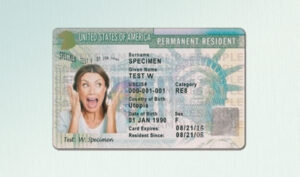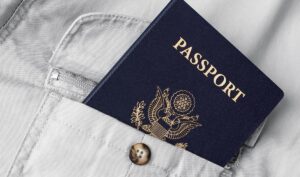
With 20 pages of questions (and another 18 pages of instructions), filling out the application for U.S. citizenship can be intimidating for many applicants.
Officially known as Form N-400, Application for Naturalization, the majority of applicants can prepare the application without extensive help from an attorney. If you have a straight forward case, you can probably do it yourself.
Getting Started
Part 1: Information About Your Eligibility
Part 2-4
Part 5: Information About Your Residence
Part 6: Information About Your Parents
Part 7: Biographic Information
Part 8: Information About Your Employment and Schools
Part 9: Time Outside the United States
Part 10: Information About Your Marital History
Part 11: Information About Your Children
Part 12: Additional Information About You
Getting Help
Getting Started
If you’re ready to tackle the application for U.S. citizenship by yourself, go to the website for U.S. Citizenship and Immigration Services (USCIS) at www.uscis.gov/n-400/ to download Form N-400 and the filing instructions.
If you want some extra support and the reassurance that you’re doing everything correctly, CitizenPath.com provides an affordable, online service to help you fill out the application for U.S. citizenship. It’s free to try, and costs hundreds less than a lawyer. You'll get simple, step-by-step instructions as you prepare the application. When you complete the Form N-400, you’ll receive the prepared official Form N-400 that’s ready to sign. You’ll also get a set of simplified filing instructions so you know which supporting documents to submit with your application and where to mail the application package. Get started for free.
Part 1: Information About Your Eligibility
When filling out the application for U.S. citizenship, Part 1 is one of the most important sections of Form N-400 because it dictates how you will move forward in your application. For most candidates, you will apply as “a lawful permanent resident of the United States for at least 5 years.” But some applicants will be eligible to file the application for U.S. citizenship in fewer than 5 years. For example, individuals that have been permanent residents for at least 3 years and have been married to and living with the same U.S. citizen spouse for the last 3 years may qualify to file Form N-400. The three most common eligibility categories are:
- Lawful permanent resident for at least 5 years – Learn more
- Lawful permanent resident for at least 3 years and married to a U.S. citizen spouse for at least 3 years – Learn more
- Individuals with qualifying service in the U.S. armed forces – Learn more
Part 2: Information About You
This section of the application covers mostly general information. It’s important that you accurately fill out items 1-4 about your name. USCIS asks for variations of your name. It's important that you provide all versions of your name to avoid confusion, maintain consistency with other legal documents, and facilitate the background check.
Legal Name
Your legal name is your current full name. It’s generally the name on your birth certificate unless it has been changed after birth by a legal action such as a marriage or court order.
Name on Your Permanent Resident Card
The name on your permanent resident card may be slightly different than the legal name that you use. Enter your name exactly as it appears on your card (even if your name has changed or your name is misspelled).
Other Names
Your other names include any additional names that you have used in the past. Usually this includes maiden names or a name that you used before a legal name change. It includes any name (including nick names) that you have used in various legal documents, bank accounts, ID cards (e.g. driver’s license, work permit), criminal records, and school records. If you have been publicly known by another name, you should include it here.
Part 3: Accommodations for Individuals with Disabilities and/or Impairments
Don’t let your disability or impairment be an obstacle to naturalization. USCIS will make reasonable accommodations at your appointments. You just need to ask. Therefore, if you need assistance with a wheelchair, sign language or anything else, use Part 3 to describe the impairment and need.
Part 4: Information to Contact You
Although USCIS will generally contact you by mail only, leave at least one reliable phone number where USCIS can reach you.
Part 5: Information About Your Residence
Most applicants will need to list five years of address history in Part 5. However, if the basis of your application for U.S. citizenship is marriage to a U.S. citizen for three years, you’ll only need to document three years of address history. List all of your addresses. USCIS uses Part 5 to help determine if you’ve met your continuous residence requirement. In other words, it’s evidence that you’ve actually maintained a residence in the U.S. for the past five years.
Generally, every period of time over the last five years should be accounted for when you are finished. In some cases, the applicant may have traveled between residences. For example, an individual may move out of a residence, travel to India for three months, and return to a new residence. In this example, the applicant made a temporary trip outside the U.S., but he always maintained permanent residence in the U.S. However, "moving" to another country and establishing residence (even just for a short period) is considered abandonment. This could result in an N-400 denial and even loss of permanent resident status.
Your mailing address should be a place that you can reliably receive mail. The U.S. Postal Service will not forward official mail from USCIS. So if you change mailing address after filing Form N-400, call USCIS at 1-800-375-5283 to update your application.
RECOMMENDED: Green Card Abandonment: Risks of Travel Abroad
Part 6: Information About Your Parents
If neither of your parents is a U.S. citizen, you can skip this entire section. But if you have a mother or father who is now a U.S. citizen, you’ll need to fill out Part 6. If you do have a U.S. citizen parent, it’s important to determine if there’s a possibility that you are already a U.S. citizen through acquisition or derivation.
Part 7: Biographic Information
The FBI uses biographic information in Part 7 to conduct a criminal background check. The background check is a standard part of the naturalization process and is necessary to make sure you meet the good moral character requirement.
Part 8: Information About Your Employment and Schools You Attended
Most applicants will need to list five years of employment and school history in Part 8 of the application for U.S. citizenship. However, if the basis of your application for U.S. citizenship is marriage to a U.S. citizen for three years, you’ll only need to document three years of employment and school history. List all of your employers and schools (including military service).
Unemployment, and even receiving public benefits, is not a bar to naturalization. So be truthful. Alternatives to “unemployed” include homemaker or retired.
Part 9: Time Outside the United States
In Part 9, most applicants will need to list their time spent outside the U.S. over the past five years. However, you’ll only need to document three years of travel history if the basis of your application for U.S. citizenship is marriage to a U.S. citizen for three years. List any trip of 24 hours or more outside the United States. USCIS will use this section to validate that you’ve met the continuous residence and physical presence requirements. If you’ve ever been absent from the U.S. for a period of six months or more (since becoming a permanent resident), we encourage you to speak to an immigration attorney to determine if you’ve disrupted your continuous residence.
It can be very difficult to recall exact dates for travel that happened years ago. Reference documents such as your passport and personal travel records. If you are unable to locate your travel records, you can submit a Freedom of Information Act (FOIA) request. CitizenPath can help you obtain this with Form G-639. The money you spend can even be credited to your naturalization service. A FOIA request will generally take several weeks. When preparing Form G-639 on CitizenPath, select “Any and all entry/exit records over the most recent five years.” If you cannot find your exact travel dates, you must do your best to estimate the exact days of your travel.
Part 10: Information About Your Marital History
This section is most relevant for applicants applying on the basis of marriage to a U.S. citizen, but all applicants must fill out Part 10. USCIS will use the information to determine if a marriage that formed the basis of permanent residence status was valid, and to determine whether an applicant really qualifies for the “three-year residence rule.”
If either spouse has previous marriages, it’s vital that they were terminated prior to a new marriage and that you have documentation to prove this. Of course, if you’ve never been married, you can answer item 1 and continue to Part 11.
RECOMMENDED: Applying for Citizenship Through Marriage
Part 11: Information About Your Children
The USCIS instructions are clear. They want you to list all of your children, regardless of whether they are:
- Alive, missing, or dead;
- Born in other countries or in the United States;
- Under 18 years or adults;
- Married or unmarried;
- Living with you or elsewhere;
- Stepsons or stepdaughters or legally adopted or
- Born when you were not married
It's extremely important that your minor children are listed here. Generally, minor children who are permanent residents living in the U.S. will automatically become U.S. citizens when the parent they are living with naturalizes. This is known as derivation of U.S. citizenship for children. If you have a child that is in the United States without a lawful immigration status, seek assistance from an immigration lawyer. The possibility that you helped the child enter the United States illegally could raise red flags.
Part 12: Additional Information About You
This section is comprised of numerous Yes/No questions that USCIS will use to evaluate your eligibility for naturalization. The questions focus on good moral character. When filling out the application for U.S. citizenship, it’s critical that you answer the questions honestly. If you believe that any of your answers may create a problem for your application for U.S. citizenship, seek the advice of an immigration attorney.
Two topics that create some of the most common problems for applicants include tax returns and failure to register for Selective Service. If you have failed to file income tax returns as required or have unpaid taxes, you will need to have an agreement in place with the IRS (or other tax authority) before applying. Likewise, if you are a male that has lived in the United States between the age of 18 and 26, you’ll need to register for the Selective Service or resolve your failure to register.
Before Filing the Application for U.S. Citizenship
If you have gaps or contradictions in your employment history, address history or travel history, expect additional questions from USCIS. If they find evidence that you’ve been untruthful, there’s the possibility of a delays, a complete denial, or even deportation in the worst cases.
This is a summary overview on filling out the application for U.S. citizenship. More detailed instructions are available from USCIS or by CitizenPath’s Naturalization Package to prepare the application. Those with more complicated cases, criminal backgrounds or a history of immigration violations are encouraged to consult with an immigration lawyer before attempting to file Form N-400.
About CitizenPath
CitizenPath provides simple, affordable, step-by-step guidance through USCIS immigration applications. Individuals, attorneys and non-profits use the service on desktop or mobile device to prepare immigration forms accurately, avoiding costly delays. CitizenPath allows users to try the service for free and provides a 100% money-back guarantee that USCIS will approve the application or petition. We provide support for Green Card Renewal (Form I-90), the Citizenship Application (Form N-400), and several other immigration services.
Want more immigration tips and how-to information for your family?
Sign up for CitizenPath’s FREE immigration newsletter and
SAVE 10%
on our immigration services



